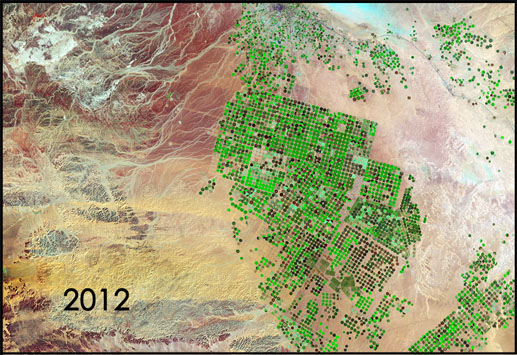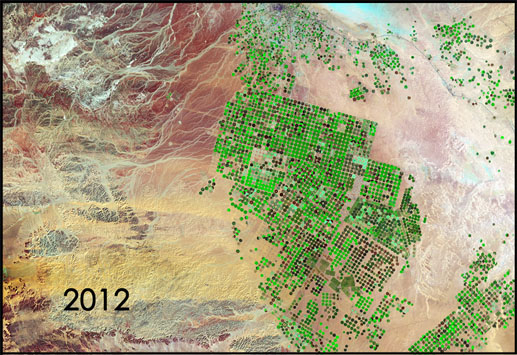Last week, NASA released satellite images showing that the Saudis are irrigating the desert in order to grow food — with fossil water that accumulated during the last Ice Age and will be gone completely in 50 years. It’s the very definition of unsustainable.




From NASA:
Saudi Arabia is drilling for a resource possibly more precious than oil.
Over the last 24 years, it has tapped hidden reserves of water to grow wheat and other crops in the Syrian Desert. This time series of data shows images acquired by three different Landsat satellites operated by NASA and the U.S. Geological Survey.
The green fields that dot the desert draw on water that in part was trapped during the last Ice Age. In addition to rainwater that fell over several hundred thousand years, this fossil water filled aquifers that are now buried deep under the desert’s shifting sands.
Saudi Arabia reaches these underground rivers and lakes by drilling through the desert floor, directly irrigating the fields with a circular sprinkler system. This technique is called center-pivot irrigation.
Because rainfall in this area is now only a few centimeters (about one inch) each year, water here is a non-renewable resource. Although no one knows how much water is beneath the desert, hydrologists estimate it will only be economical to pump water for about 50 years.
To put this in perspective, two-thirds of the water used to produce the goods and services consumed by Saudi Arabians every year comes from outside the country. Saudi Arabia has been able to tamp this down by using fossil water to grow crops in the desert, but in a short time, the country will be even more dependent on other people’s water to satisfy the needs of its citizens.



